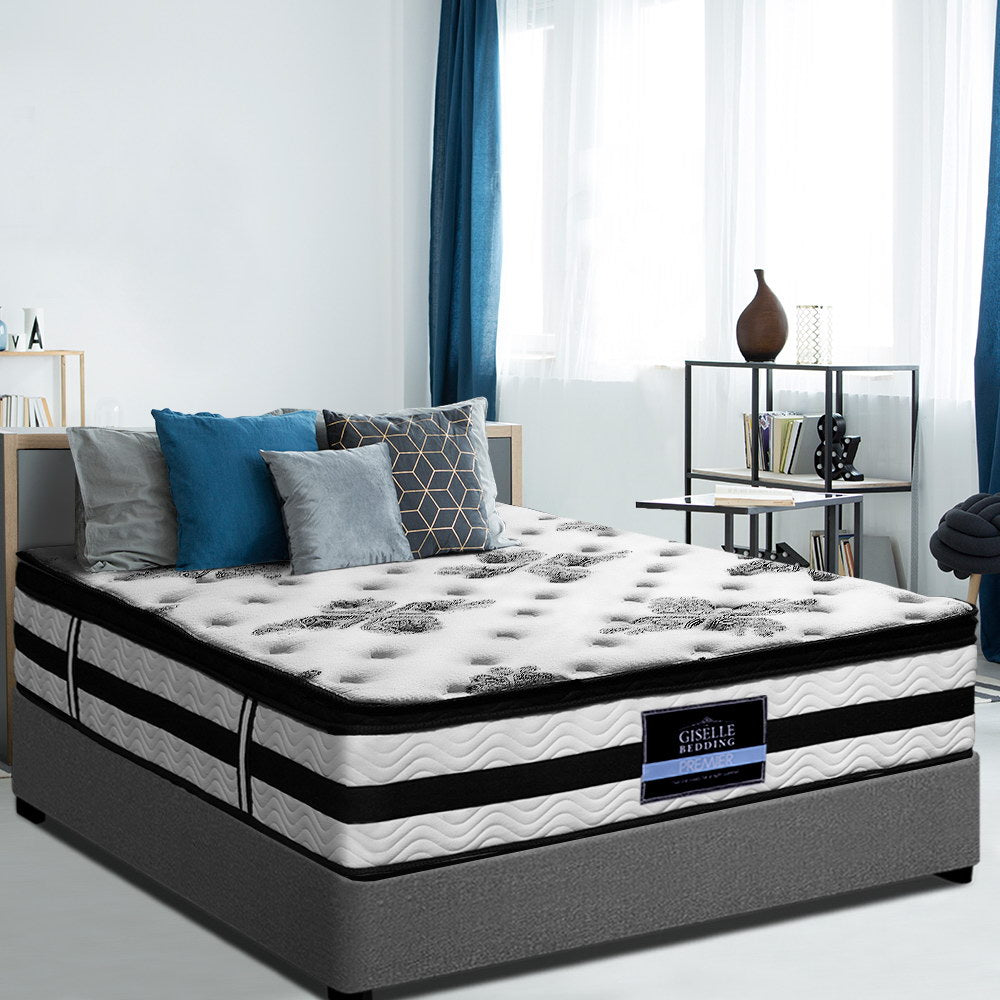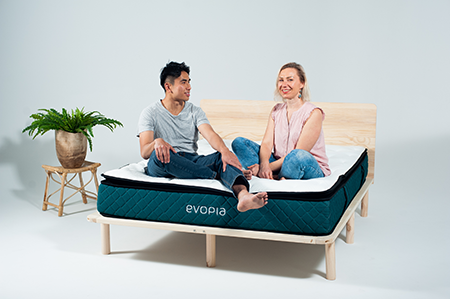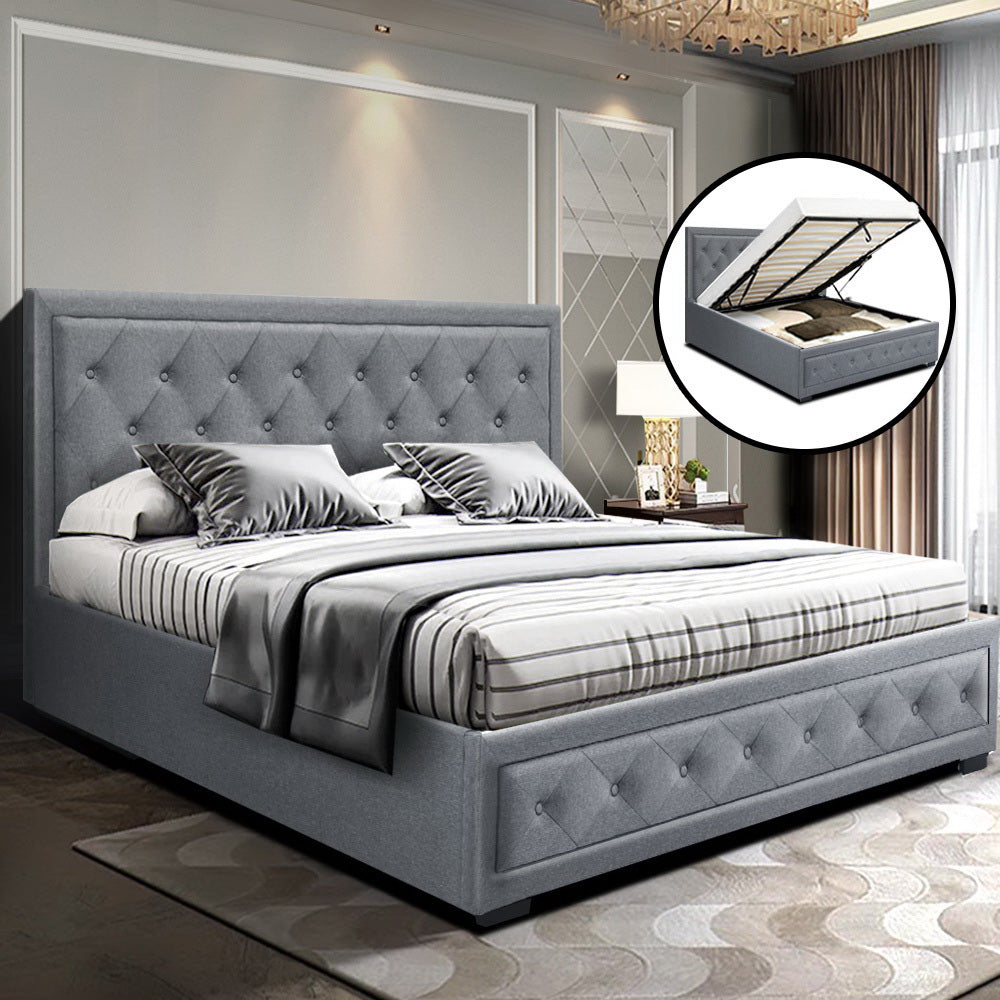Do you sleep on your side?
According to a Danish study, 54.1% of people sleep on their side, while 37.5% sleep on their back and 7.3% on their Tummy. As we get older or heavier, we are more likely to sleep on our side.Side Sleeping Benefits
There are some benefits of sleeping on our side and it is considered to be the
healthiest position for sleeping:
- Side sleepers are less likely to snore and is therefore the best sleeping position for people with sleep apnea.
- Side sleeping encourages better circulation of air and blood throughout the body which helps food digestion and increased oxygen to the brain.
- If you sleep with your back and pelvis in alignment, you maintain the natural position of your spine which reduces pressure and pain on your body.
To achieve these benefits, it is important to ensure that you have the right Mattress and Pillow to support your body.
- Too much concentration of body weight in a small area can create painful pressure points on hips and shoulders.
- A Mattress that is too soft putting your spine in an awkward position can contribute to lower back pain.
- A Mattress that is too firm that you don’t sink into will put too much pressure on your hips and shoulders.
- Your neck and head need to be well supported by a pillow that holds the weight of your head.

The correct sleeping position keeps your spine and neck in alignment
Choosing a Mattress for a side sleeper
People who sleep on their side need to select a mattress that contours to theirbody to keep their spine aligned during sleep. The firmness is the most important factor in choosing a mattress and bodyweight needs to be taken into account. A lighter person will need a softer Mattress, so they sink enough for the Mattress to contour to their body. A heavier person will need a firmer mattress, so they don’t sink too far to align their spine. Do you need a new mattress?
Body weight Ideal firmness range:
Under 60kg
Ideal firmness range: Medium Soft 5.0
People under 60kg will not be comfortable on a firm mattress as they will not sink in to align their spine
30kg – 100kg
Ideal firmness range: Medium 5.5-6.0
People between 60 and 100kg prefer a medium mattress, not too soft or too firm
100kg-120kg
Ideal firmness range: Firm 6.0-6.5 or Ultra-Firm 7.0-9.0People over 100kg will sink too far on a soft Mattress so a firm Mattress is a good choice
Which type of Mattress construction?

A Hybrid has a spring support core with a foam top layer
Hybrid Mattress construction
A Hybrid has a spring support core with a foam top layer. A Hybrid Mattress can be the best of both worlds for side sleepers, with a spring support core for breathability and a top layer of foam for conformance.
There are three types of Hybrid Mattress, the Tight Top, Pillow Top and Euro Top.
There are two types of innerspring core, the Bonnell Spring which is a traditional innerspring mattress and the Pocket Spring.
Soft to Medium – Pillow Top
Based on a pocket spring core, a pillow top has a foam topper incorporated in the top of the Mattress that is very soft and cradling for your body. If you are on the lighter side of average bodyweight these are a good choice as you sink into the Mattress while the pocket spring core maintains underlying support.
Medium – Euro Top
Also based on a pocket spring core, a Giselle Euro Top has a plush combination of soft and supportive material that is stitched right to the edge of the mattress. More premium than a pillow top, a Euro Top gives more support right to the edge of the Mattress and is usually deeper. Therefore, it takes more weight to sink into the Mattress and is ideal for people with a bodyweight between 60kg and 100kg.
Medium to Firm – Tight Top
Based on a Bonnell Spring support core, Tight Top Mattresses are firmer with less foam in the top layer. These are ideal for people with a body weight over 100kg as they offer more resistance to sinking in and avoid that sagging feeling in the middle of the Mattress.
Bonnell Spring or Pocket Spring.
A Bonnell Spring Mattress is a traditional construction where the springs are held together with a mesh. Almost everyone has owned a Bonnell Spring Mattress at some point. They are very durable, allow excellent air flow or ventilation and are the most affordable Mattress option.
Bonnell Spring Mattresses provide very even support which can result in pressure points. They are also not as good at isolating partner movement which can lead to sleep disturbance. They produce a very strong and firm Mattress and feature in Tight Top models.
Evopia Pocket Spring Mattress has individually wrapped coils that are stitched in and not connected with the other springs. This means they move independently and contour to your body more, reducing pressure points. Pocket spring Mattresses provide people with a bodyweight up to 100-120kg with superior comfort and minimal partner disturbance. (link to pocket spring collection) Pocket Spring Mattresses can be too soft and giving for people with a body weight over 100-120kg.
Choosing a Pillow for a side sleeper.
A pillow should support your head and neck so that the spine maintains a straight horizontal line. Using the correct pillow can help in addressing or preventing many common forms of neck pain and back pain.
For a side sleeper a pillow needs to be thick and supportive enough to hold your head, while not so thick so it elevates your head above your spine. A good medium or firm polyester filled pillow is ideal.
A contour pillow can be good as it supports your neck while letting you head level with your spine.
Feather and down filled pillows are often too light and don’t provide enough support for a side sleeper. They are however recommended for a back sleeper where the head needs to be lower.
When sleeping on your side your upper leg rotates downward pulling the pelvis and distorting the natural line of the spine. One way of preventing this is to bend your legs and place a firm pillow between your knees to keep the spine in the neutral position. By reducing this downward rotation there is less pressure on the spine which can help with back pain.








